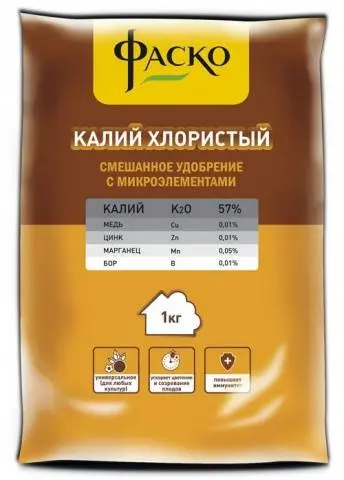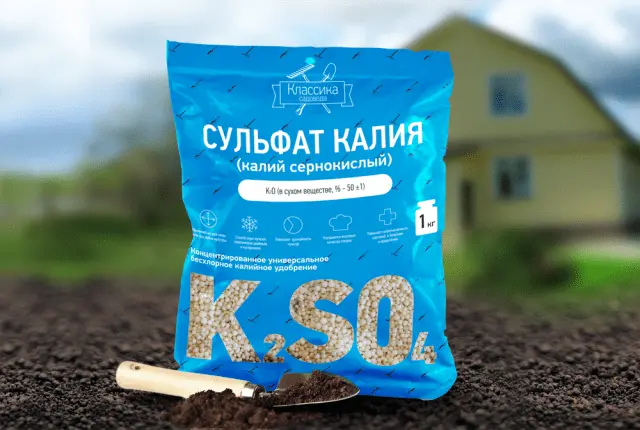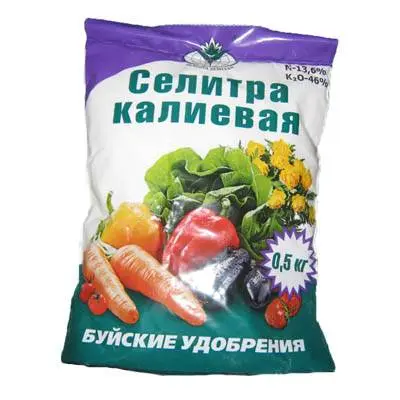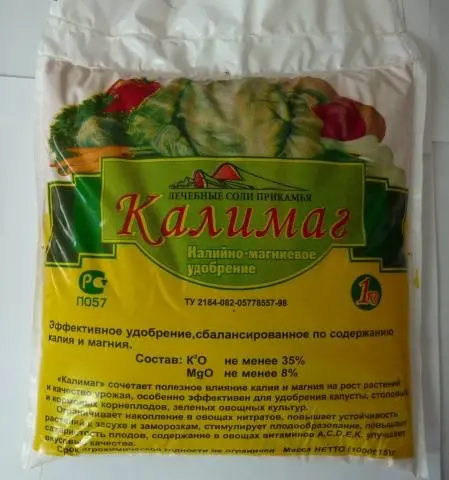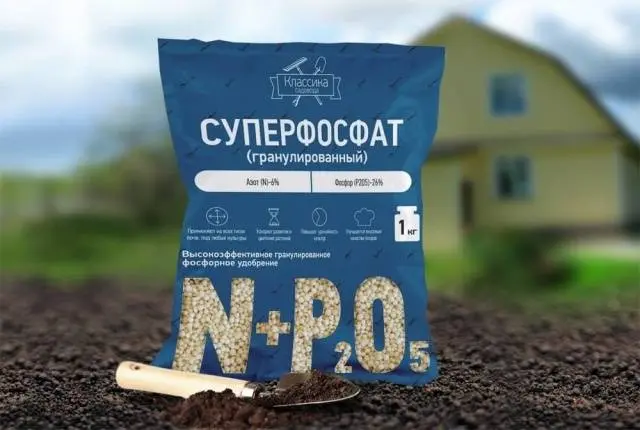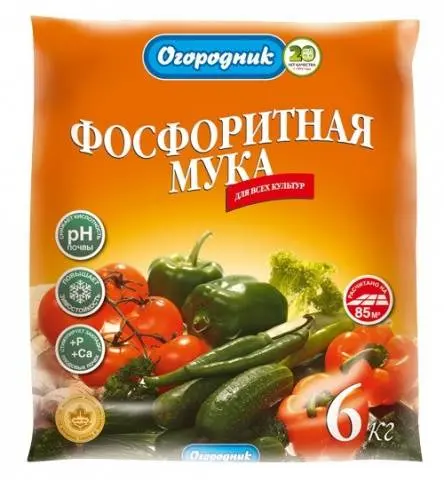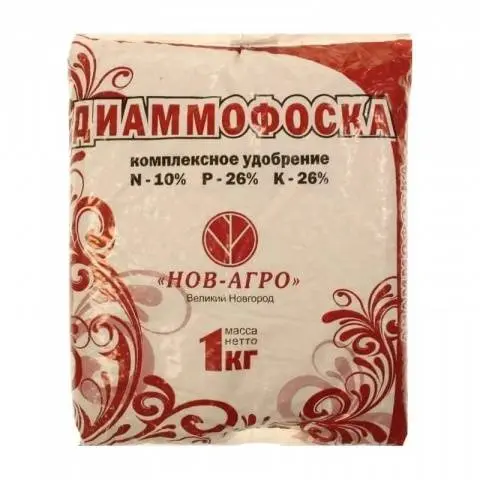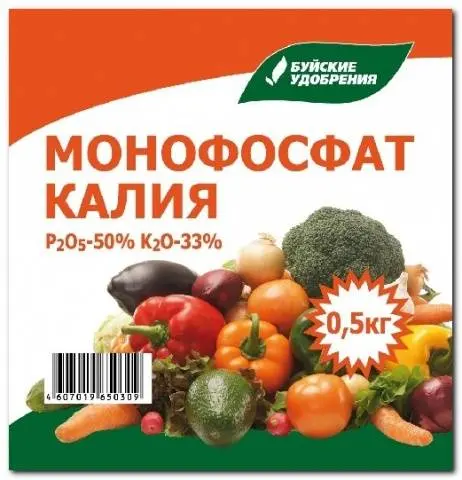Contents
Cucumbers – a widespread crop, must be grown in every garden. It is impossible to imagine a summer menu without cucumbers; the vegetable is included in many recipes for winter preservation. Many winter dishes are prepared using pickled and pickled cucumbers. Growing cucumbers that are tasty and beautiful in appearance is the task of every gardener.

The culture grows well on fertile soils. That is, those that are provided with a high level of nutrients. The soil in summer cottages is constantly exploited, the grown plants take out the necessary nutrients. Therefore, they need to be constantly replenished by fertilizing.
The role of nitrogen in growing cucumbers
Nitrogen is the most demanded element in plant nutrition. For cucumbers, nitrogen is relevant at all stages of growth: first, to increase green mass, then to bloom and lay the crop, then during the period of fruiting and its extension.

Nitrogen in nature is found in humus, in the upper fertile soil layer. Organic matter under the influence of microorganisms becomes available for absorption by plants. Natural reserves of nitrogen for cultivated plants may not be enough. Then growers are required to replenish the lack of the element by applying nitrogen fertilizers.
However, the following situation may arise: the gardener regularly applies fertilizer, but the cucumbers do not grow. Then the reason lies in the soil itself.
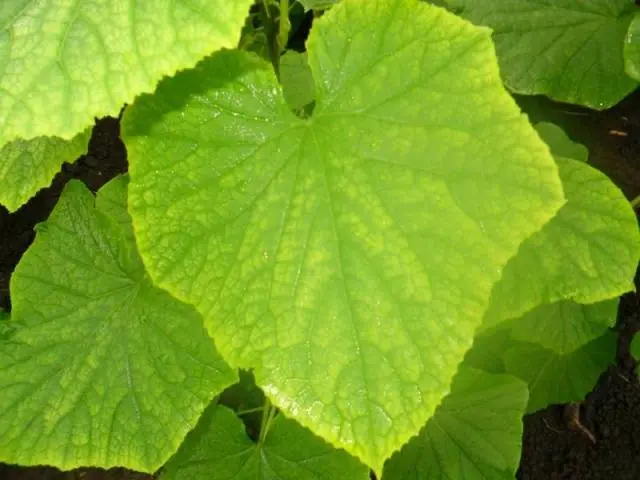
So, at too low a temperature or high acidity of the soil, nitrogen is in a form that is not available for absorption by cucumbers. Then the introduction of nitrate nitrogen (ammonium nitrate or sodium nitrate) is required.
And if the soils are slightly alkaline or neutral, then it is better to apply ammonia nitrogen (ammonium sulfate, ammonium-sodium sulfate).
Overfeeding cucumbers with nitrogen is harmful. Plants actively increase deciduous mass to the detriment of flowers and fruits. And if the fruits grow, then they have a non-marketable appearance: bent and twisted. Everything is good in moderation, and the application of nitrogen fertilizers should be under special control, since with their excess, the substance accumulates in cucumbers in the form of nitrates.
Watch a helpful video about nitrogen and nitrogen fertilizers:
Types of nitrogen fertilizers
Organic
Nitrogen fertilizers for cucumbers – all types of organic fertilizers (manure of any animals, bird droppings, peat). These fertilizers have been used by man in crop production since ancient times. In order for organic matter to work, it must go into a form convenient for absorption by plants, and this takes time. No wonder it is recommended to make fresh manure in the fall. The autumn-winter period is just the right time. Apply 40 kg of organic matter per 1 acre of land, followed by digging the soil.
Fresh manure during decomposition releases a huge amount of heat. Therefore, plants can simply “burn out”. However, this property of fresh manure is used by gardeners to prepare “warm beds”.

For feeding plants in the summer, use an infusion of fresh manure or litter. 1 volume of organics is poured with 5 volumes of water, insisted for a week. The finished nitrogen fertilizer concentrate is diluted and fed with cucumbers. For 10 parts of water, take 1 part of the infusion.
The attitude to peat as a nitrogen fertilizer among gardeners is twofold. Peat contains nitrogen, but in a form that is poorly suitable for absorption by plants. Peat is much more suitable for improving the quality and composition of heavy soils, which, in its presence, become air and moisture permeable. The use of peat is possible along with other fertilizers. However, you can increase the value of peat by making peat compost out of it.
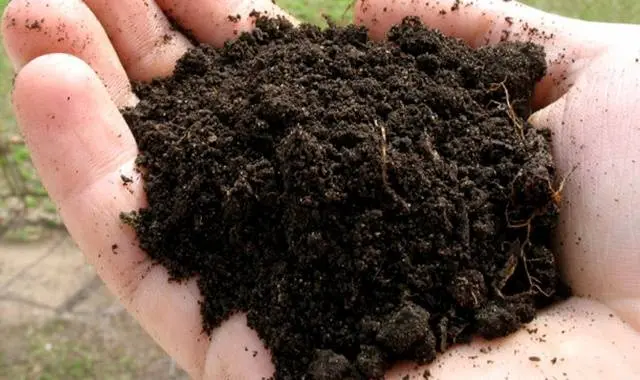
Sawdust is laid in the base, which is covered with a layer of soil and peat, then a significant layer of grass, tops, plant residues is laid out, on top of which a layer of soil and peat is laid out. The whole structure is spilled with infusion of slurry. The height of the structure is about a meter, the preparation time is 2 years. The criterion for compost readiness is its crumbly structure and pleasant earthy smell.
Urea
Urea is an organic nitrogen fertilizer for cucumbers, which is produced artificially. Fertilizer is familiar to all gardeners due to its efficiency (nitrogen content 47%) and low cost. After being introduced under the influence of microorganisms, urea passes into a form convenient for assimilation by cucumbers. The only requirement when using urea is that the granules should be embedded deep into the soil, as the decomposition produces a gas that can escape, and so loss of nitrogen will occur.
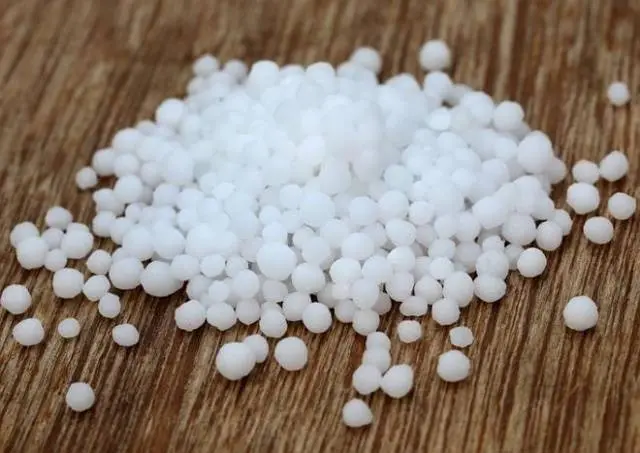
The most effective way to feed cucumbers with urea is to use its solution. Dissolve 45-55 g of urea in 10 liters of clean water. Urea is also suitable for foliar feeding of cucumbers, applying the solution to the leaves and stems through spraying. In this way, you can very quickly eliminate the lack of nitrogen in cucumbers.
Ammonium nitrate
Ammonium nitrate or ammonium nitrate (ammonium nitrate) is a nitrogen (34% nitrogen) fertilizer for cucumbers that is no less popular among gardeners. It is produced in the form of powder or granules of white or gray color, highly soluble in water. Can be used on any soil. Suitable for feeding cucumbers at any stage of development. Dissolve ammonium nitrate (3 tablespoons) in a 10-liter bucket of water and water the plants. You can also use the root method of fertilizing. Grooves are made next to the plantings of cucumbers, into which saltpeter is distributed, based on the norm of 5 g of ammonium nitrate per 1 sq. m of soil.
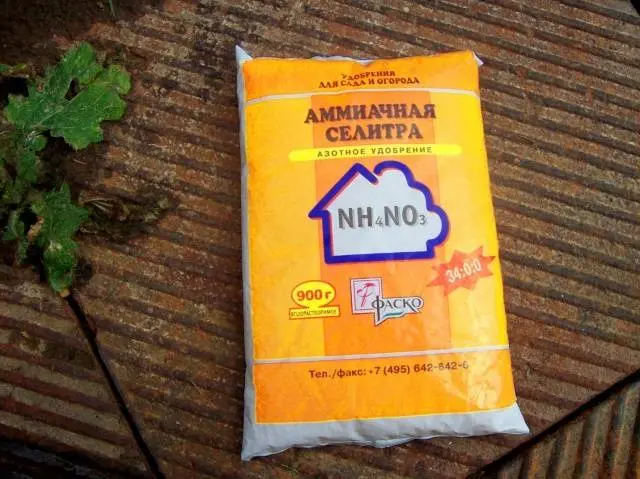
Ammonium sulfate
Another name is ammonium sulphate. Nitrogen fertilizer works in any weather. Therefore, it can be applied to the soil when it is dug up in early spring or autumn. A feature of ammonium sulfate is that the nitrogen in the fertilizer is contained in the ammonium form, which is very convenient for absorption by plants. Ammonium sulfate for cucumbers can be applied in any form: both dry, with abundant watering, and in the form of a solution. Consumption rate: 40 g for 1 sq. m planting cucumbers. To prevent acidification of the soil, add ammonium sulfate along with chalk (1: 1).
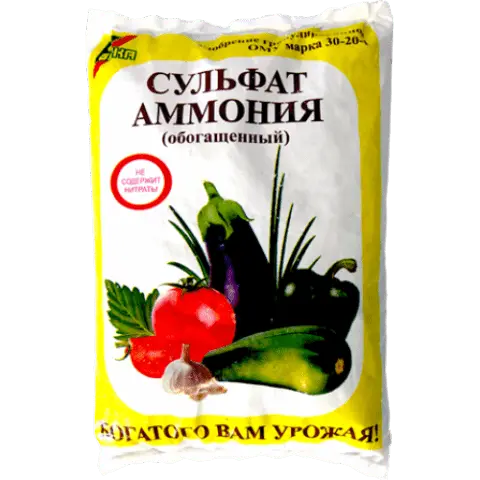
Calcium nitrate
Other names for calcium nitrate fertilizer or calcium nitrate are also used. Nitrogen fertilizer is more suitable for feeding cucumbers on acidic soils, especially when grown in protected ground. It is the presence of calcium that helps plants to fully assimilate nitrogen.
The fertilizer dissolves well, absorbs moisture during storage, which causes caking. For cucumbers, it is recommended to feed “per leaf” with calcium nitrate from the beginning to the end of the vegetative period every 2 weeks. Nitrogen fertilizer spray solution: dilute the fertilizer (20 g)/10 l of water and spray the leaves and stems of the cucumbers.

Fertilizer increases the resistance of plants to various diseases and temperature extremes. Forms a good crop of high quality.
Sodium nitrate
Or sodium nitrate, or sodium nitrate. The use of this nitrogen fertilizer is indicated on acidic soils. The nitrogen content is only 15%.
Everyone chooses nitrogen fertilizer for cucumbers himself, however, it is worth owning a small theoretical base, so that, firstly, not to harm the plants, and secondly, not to waste money. Since not all nitrogen fertilizers are universal. Be sure to consider the acidity of the soil in your garden to get the most benefit from nitrogen fertilization.
Fertilizers for cucumbers
For the entire growing season, cucumbers usually need 3-4 fertilizing. However, if the plants look healthy, set ovaries and bear fruit abundantly, reduce feeding to a minimum. Cucumbers, like other plants, require not only nitrogen, but also potassium and phosphorus.
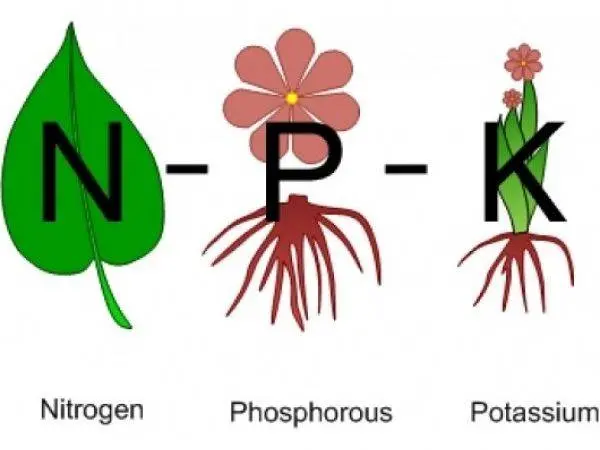
Potash fertilizers
With a lack of potassium, cucumber leaves turn yellow from the edge and wrap inside. Then they die off. The fruits are pear-shaped and have a watery, bitter taste. Plants cannot withstand temperature extremes, attacks by bacteria and insect pests. Cucumbers bloom, but do not form ovaries. Top dressing with potash fertilizers is especially important for cucumbers at the stage of crop formation:
- Potassium chloride has a high potassium content – 60%. However, due to the content of chlorine, which does not have the best effect on the growth and fruiting of cucumbers, the use of this fertilizer directly during the growing season becomes impossible. However, it can be applied in the fall when preparing the soil. Use 20 g of potassium chloride for 1 sq. m;

- Potassium sulfate – Potassium sulfate has a high potassium content, suitable for use in greenhouses and outdoors. Does not contain chlorine, which is especially important when feeding cucumbers. When digging the ground for cucumbers in the spring, apply 15 g of fertilizer per square meter. m. During the current top dressing, the use of the solution is shown. Take potassium sulfate (30-40 g), dissolve in a bucket of water (10 liters of water), water the plants. Apply potassium sulfate along with superphosphate. As a couple, they work very well.

- Potassium (potassium) nitrate or potassium nitrate – a popular potash fertilizer containing nitrogen and potassium – the most necessary elements for cucumbers. It also contains less nitrogen. Therefore, the use of potassium nitrate is indicated at the stage of crop formation, when cucumbers do not need to grow green foliage. Does not contain chlorine. To feed plants with a solution, take potassium nitrate (20 g) and dissolve in 10 liters of water;

- Kalimagnesia (“Kalimag”) differs in that, in addition to potassium, it also contains magnesium, which improves the taste of cucumbers and prevents nitrates from accumulating. Together, 2 elements are absorbed by cucumbers with maximum benefit. Feed the plants at any time, diluted or in the form of granules. Dissolve 20 g of potassium magnesia in a 10-liter bucket of water and pour over the cucumbers. If you use dry, then measure 40 g per 1 sq. m of soil.

Potassium is important for plants, it accelerates the processes of photosynthesis, strengthens the immunity of cucumbers, improves the taste of fruits and the amount of ovary formation.
Phosphate fertilizers
Without phosphorus, cucumber seeds will not sprout, the root and ground part of the plant will not develop, cucumbers will not bloom, and there will be no harvest. Phosphorus is called the growth energy of cucumbers, how important is the element for nutrition. A feature of phosphorus is that plants themselves regulate its amount during absorption. Therefore, gardeners cannot overfeed or underfeed cucumbers.
Plants by their appearance signal you that there is not enough phosphorus. If the cucumber leaves are pale green, there are spots or an uncharacteristic color on the lower leaves, the flowers and ovaries of the cucumbers fall off, then these are signs of a lack of phosphorus. Use fertilizers with a high phosphorus content to help plants quickly:

- Superphosphate – is produced in the form of granules, the phosphorus content is 26% in a convenient form for absorption by plants. Apply superphosphate in the fall when digging the soil, for each square. m use 40 g of fertilizer. For planned feeding of cucumbers, make a solution: dissolve 60 g in 10 liters of water. Another method for preparing the solution: pour superphosphate (10 tablespoons) with 1 liter of hot water, stir well and let it brew for a day, stirring occasionally. Dilute 0,5 cups of the resulting concentrate in water (10 l);

- Phosphoric flour works great in acidic soils. It is necessary to make it in the fall, however, the effect should not be expected immediately. Only after 2 years, there will be a visible result. Add flour (30-40 g) per 1 sq. m of soil. On slightly acidic soils, flour can be added 3 times more, it does not dissolve in water. The effect persists for several years, especially with the joint application of nitrogen fertilizers;

- Diammophos – is distinguished by its versatility, suitable for any crops, soils and time of application. Apply fertilizer (30 g) per 1 sq. m of soil during autumn or spring digging, 40 g of diammophos with planned top dressing per 1 sq. m landings;

- Potassium monophosphate contains 50% phosphorus and 26% potassium. When using it, you can extend the period for obtaining cucumbers, protect them from temperature extremes and diseases. To prepare the solution, take 10 g of fertilizer / 10 liters of water. Cucumbers respond well to foliar applications of potassium monophosphate: dilute 5 g/10 l of water and spray the plants.

Phosphorus increases the number of ovaries on cucumbers. Therefore, by using fertilizers with a high phosphorus content, provide yourself with high yields.
Conclusion
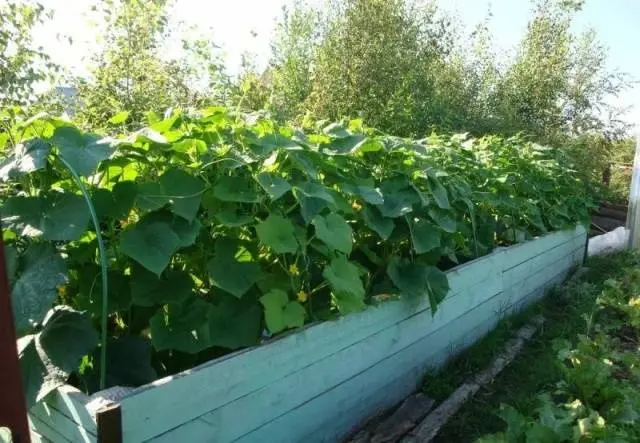
Modern crop production is impossible without fertilization. You can spend all your energy on planting, watering and weeding, however, you can not get a crop at all or get it of very dubious quality. But only because the plants did not receive all the necessary nutrients in a timely manner. Any type of activity involves a certain set of not only skills, but also knowledge. Crop production is no exception. Plant life stands “on three pillars” – phosphorus, potassium, nitrogen. The first task of the gardener is to provide food for his wards.










